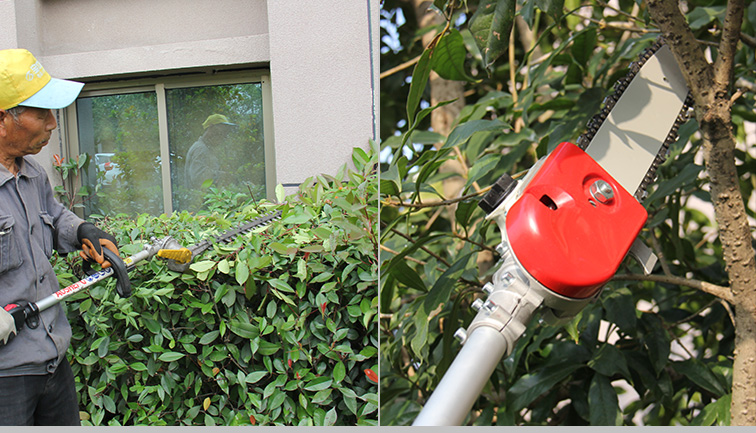In garden maintenance, it is important to choose a tool of high quality, but if the user cannot master the correct use methods and skills, no matter how good the tool is, it is difficult to complete the maintenance task with quality and quantity. Everyone knows that pruning, tree felling and other operations require the use of chain saws, and how to cut branches of different thicknesses accurately, quickly and safely. Technical experts from Steele have summarized some cutting techniques.
In cutting operations, the more complicated ones are felling trees or cutting trunks with larger diameters. When felling a tree, first remove branches and leaves in the root work area of the tree, and clear the root work area of the tree in order to find a safe foothold. Then saw the felled tree groove, at the selected base, first cut longitudinally and then cross-cut. The inverted direction of the tree can be determined when sawing the felled tree groove with the help of the inversion tester on the chain saw housing. Note that the tree felling groove should be perpendicular to the tree's falling direction, the groove should be as close to the ground as possible, and the cutting depth is about 1/5 to 1/3 of the trunk diameter.
For long-fiber cork, cutting the sapwood notch can prevent it from breaking when it falls. Cut both sides of the trunk at the same height as the bottom of the groove, and the depth is about 1/10 of the diameter of the trunk. If the trunk is thick, the cutting depth must not be wider than the guide. If the wood is rotten, do not cut the sapwood cut.
Saw the felling kerf slightly above the bottom of the fallen tree groove, and cut horizontally. A non-sawn area of about 1/10 of the diameter of the trunk is left between the felling cut and the felling groove to act as a ridge break. Drive the wedges into the felling incision in time. Only use wooden, aluminum or plastic wedges. Do not use steel wedges, otherwise it may damage the chain saw chain and cause rebound. The broken ridge helps to control the tree's falling direction. Never saw through the broken ridge, otherwise the falling direction cannot be controlled, which may cause accidents.
In addition, when cutting thicker trunks, if the diameter of the trunk is greater than the length of the chain saw guide, it is appropriate to use the block cutting method. When cutting the first incision, the end of the guide plate should be just after the broken ridge of the trunk, and the chain saw should be horizontal and swing as much as possible, with the wooden teeth as the fulcrum, and the increased saw cut should be as small as possible. When repositioning the saw chain to the next saw cut, the entire guide plate should be embedded in the saw cut to prevent uneven saw cuts, and operations such as clamping the wooden teeth should be performed, and then a wedge should be inserted into the cut. Only a simple fan-shaped cut is required for the last sawing, but the broken ridge cannot be cut.
If the diameter of the trunk is more than twice the length of the guide plate, or the diameter of the trunk is particularly large, most of the tree core is not cut. In order to prevent the tree core from breaking and want to accurately control the tree's falling direction, it is necessary to saw the tree core. Use a chain saw to puncture the center of the fallen tree groove, and then swing the guide plate from top to bottom in an arc.
For thinner tree trunks, it can be cut into simple fan-shaped cuts. Clamp the wood inserting teeth behind the broken ridge and make the chain saw swing on this axis. You need to be careful to only swing to the broken ridge so that the wood inserting teeth rotate around the trunk.


